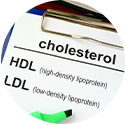- High fructose corn syrup has been shown to contain trace amounts of mercury as a result of food manufacturing processes
In 2009 scientists from United Tribes Technical College, Bismarck, ND, published the following in the medical journal Behavioral Brain Function: “Among dietary factors, learning and behavior are influenced not only by nutrients, but also by exposure to toxic food contaminants such as mercury that can disrupt metabolic processes and alter neuronal plasticity. (The nervous system’s neuron’s ability to react with adaptive changes to inputs.)
Neurons lacking in plasticity are a factor in neurodevelopmental disorders such as autism and mental retardation.
Essential nutrients help maintain normal neuronal plasticity. Nutritional deficiencies, including deficiencies in (Omega 3 chains) the long chain polyunsaturated fatty acids eicosapentaenoic acid and docosahexaenoic acid, the amino acid methionine, and the trace minerals zinc and selenium, have been shown to influence neuronal function and produce defects in neuronal plasticity, as well as impact behavior in children with attention deficit hyperactivity disorder.
Nutritional deficiencies and mercury exposure have been shown to alter neuronal function and increase oxidative stress among children with autism. These dietary factors may be directly related to the development of behavior disorders and learning disabilities.
High fructose corn syrup has been shown to contain trace amounts of mercury
Mercury, either individually or in concert with other factors, may be harmful if ingested in above average amounts or by sensitive individuals.
High fructose corn syrup has been shown to contain trace amounts of mercury as a result of some manufacturing processes, and its consumption can also lead to zinc loss. Consumption of certain artificial food color additives has also been shown to lead to zinc deficiency.
Dietary zinc is essential for maintaining the metabolic processes required for mercury elimination. Since high fructose corn syrup and artificial food color additives are common ingredients in many foodstuffs, their consumption should be considered in those individuals with nutritional deficits such as zinc deficiency or who are allergic or sensitive to the effects of mercury or unable to effectively metabolize and eliminate it from the body.” (1)
“The number of children ages 6 to 21 in the U.S. receiving special education services under the autism disability category increased 91 % between 2005 to 2010 despite fewer children receiving special education services overall during the same time period. A comparison of autism prevalence between the U.S. and Italy using the Mercury Toxicity Model suggests the increase in autism in the U.S. is not related to mercury exposure from fish, coal-fired power plants, thimerosal, or dental amalgam but instead to the consumption of HFCS. Consumption of HFCS may lead to mineral imbalances.” (2)
There’s been an increase in recognition of autism over the last 10 years – presently one out of every 90 children have some form of the disorder, which is a condition that causes difficulties with perception, thought, language, behavior and sociability.
To really understand autism, we need to look at what has changed during this period of rapid diagnosis of the disorder. We know that genetics hasn’t changed. What has changed are environmental factors, including the increasing number of chemicals we are exposed to from pesticides, flame retardants, plasticizers, solvents, personal care products, medicines, artificial sweeteners and flavors. These varied factors have a clear impact on the expression of our genes.
Each of us is biochemically different, which is why two brothers may have the same genes, but one may develop a disorder mitochondrial dysfunction while the other never does – even if exposed to the same environmental factors in utero or beyond. Simply put, some people are predisposed to react to a chemical substance differently than others.
It has been found that many autistic children have a defect in their ability to excrete certain chemicals; therefore, they were more genetically susceptible to the chemicals’ effects. Many also have and an inability to metabolize high levels of metals which results in neuro-inflammation, oxidative stress, impaired mitochondrial function and neurotransmitter imbalances. They also often have liver toxicity and gastrointestinal problems.
What does this mean for prevention of autism?
While the cause of autism is still not clear, nobody can say definitively as this point that doing one thing or another will completely prevent the disorder. However, looking at the data and reviewing the common denominators in these children, what is clear is that there is an undeniable link between the chemicals found in our environment and autism. The best we can do – to help reduce the numbers and/ or the severity of cases – is to eliminate these chemicals from our lives as much as we can by eating a healthy diet of natural, unprocessed foods rich in vitamins and nutrients, rounding out our diets with nutritional supplements as advised by a healthcare professional and reducing our exposure to phthalates (like those in nail polish), organophosphates (often found in pesticides), PCBs, (found in plastic products including most baby bottles), solvents (found in furniture and new carpets) and heavy metals such as lead and mercury. These measures should, if possible, begin with the mom in the pre- or peri-conception time, at the latest, and continue with the birth of the child.
And what if my child has autism?
At the Magaziner Center for Wellness, our goal is to help maximize a child’s potential by setting up an individualized program aimed at diagnosing and treating often hidden problems that may be impeding his or her development. We support the use of behavioral counseling and speech, physical and occupational therapies that are often recommended as part of the overall treatment regimen.
We analyze each patient individually – not every treatment works for every person. We administer safe, nontoxic dietary supplements, antifungal agents, and dietary modifications. We also place great emphasis on the detoxification and evaluation and treatment of toxic metals, including mercury, lead, cadmium and aluminum. Treatment may also include improving digestion and assimilation and asking a child to avoid certain foods which could be harmful to his or her wellbeing. We often recommend hyperbaric oxygen therapy, which greatly increases oxygen uptake to the brain, nervous system, skeletal muscle, and all body tissues and has been been found useful in the treatment of the symptoms of autism.
What’s Next?
While autism is still quite a mystery, great strides have been made in increasing the awareness of the disorder and uncovering some clues to its potential causes. With more research, increased commitment and willingness for doctors and patients alike to ask tough questions and demand a change in our environment, I am confident the next 10 years will yield much better news on this front than the previous decade has.
1. Dufault R, Schnoll R, Lukiw WJ, Leblanc B, Cornett C, Patrick L, Wallinga D, Gilbert SG, Crider R. Mercury exposure, nutritional deficiencies and metabolic disruptions may affect learning in children. Behav Brain Funct. 2009 Oct 27;5:44.
2. Dufault R, Lukiw WJ, Crider R, Schnoll R, Wallinga D and Deth R Clinical Epigenetics 2012, 4:6 (10 April 2012)




































Recent Comments